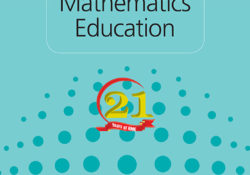tandfonline.com – Exploring shifts in the characteristics of US government-funded science curriculum materials and their (unintended) consequences
tandfonline.com har udgivet en rapport under søgningen “Teacher Education Mathematics”: Abstract Abstract Grant-funded curriculum development efforts can substantially impact practice and research in science education. Therefore, understanding the sometimes-unintended consequences of changes in grant priorities is crucial. Using the case of two large funding agencies in the United States, the current portfolio review provides insight into these consequences by examining shifts in the characteristics of K-12 science curriculum materials funded during two time periods with differing funding priorities. Findings revealed a move away from comprehensive curricula, increased reliance on technology-based materials, a growing trend towards open access, but also a decrease in teacher supports. While these shifts may enhance teachers’ flexibility to shape curriculum, they also increase the challenge of ensuring curricular coherence. Recommendations are outlined for policymakers, science education… Continue Reading

